Center Back (Lumbar) Neck (Cervical) Annulargram™ Gallery Success Stories Find a Physician Veteran Affairs Clinical Studies FAQs Articles / Blog Summary For Doctors Become a DISCSEEL®
Physician Research Patents
The majority of back pain is a biological and chemical problem associated with annular tears in spinal discs.
The majority of back pain is a biological and chemical problem associated with annular tears in spinal discs.
Home » Conditions Treated
The DISCSEEL Procedure is a promising option for treating a variety of pain conditions linked to disc damage, particularly for patients with degenerative disc disease, herniated discs, or chronic pain that has not responded to conservative treatments. Its ability to repair annular tears and promote disc regeneration provides a minimally invasive solution with the potential for long-term pain relief and improved quality of life.

The DISCSEEL® Procedure uses Fibrin, an FDA-approved substance that is used off-label in this procedure, to seal torn tissues in the disc. Fibrin is injected into disc tears, typically taking less than an hour. You’ll be walking the same day. The disc continues healing over 3-12 months as you increase your activity.

Over time, as a result of normal wear and tear, the annulus fibrosus develops tears, which we know as annular tears. If they are large enough, these annular tears allow the nucleus pulposus to leak out of the disc. Our bodies then perceive the leaking nucleus pulposus as a foreign substance and react with inflammation and irritation of surrounding nerves. This causes the nerves to send out pain signals, and depending on the areas of the body the nerves reach, painful symptoms are felt in the arms, hands, legs, or even feet.

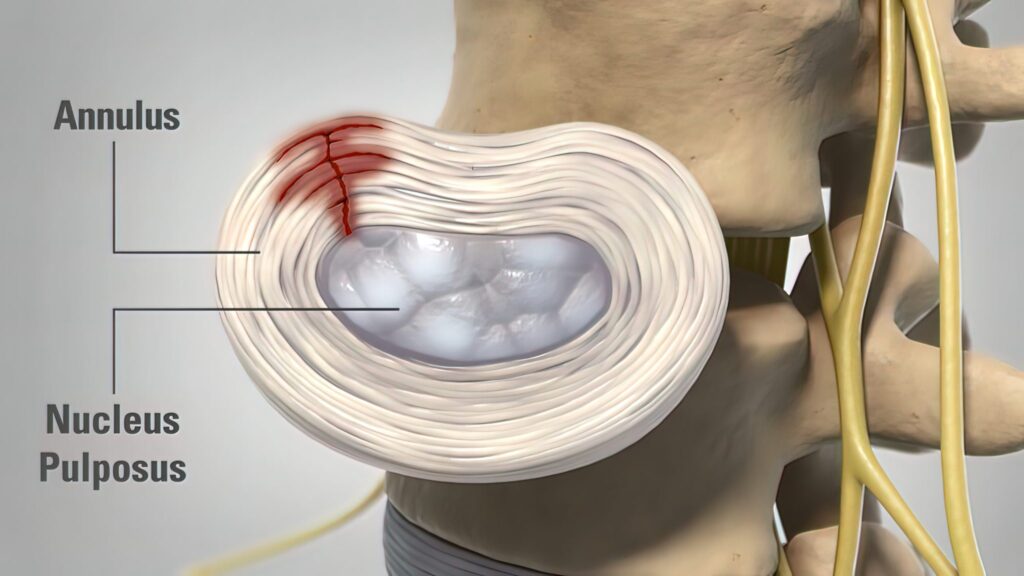
When spinal discs develop annular tears, these tears can progress to herniated discs, thinning discs, bulging discs, and degenerative discs, and these issues all lead to chronic low back pain.
When spinal discs develop annular tears, these tears can progress to herniated discs, thinning discs, bulging discs, and degenerative discs, and these issues all lead to chronic low back pain.

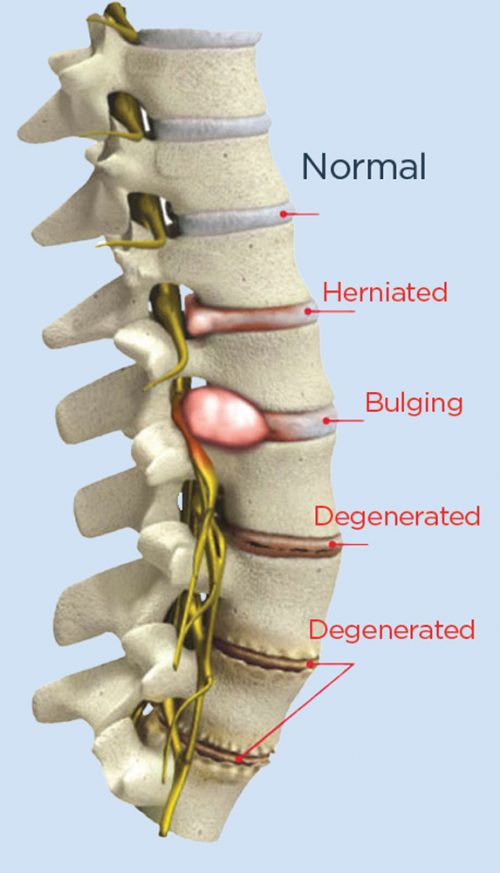
As we age, spinal discs obtain wear and tear that can lead to annular tears. These tears may cause disc desiccation (dehydration), leaving the spinal discs thin and unable to cushion the vertebrae. Degenerative disc disease can lead to other spine conditions as well, but annular tears are the underlying cause of degenerative disc disease and its symptoms.
Treatment for chronic back pain varies depending on its cause. Conservative treatments include physical therapy, pain management medications, and lifestyle changes like exercise or posture correction. In cases where these options don’t provide relief, minimally invasive procedures such as the DISCSEEL® Procedure
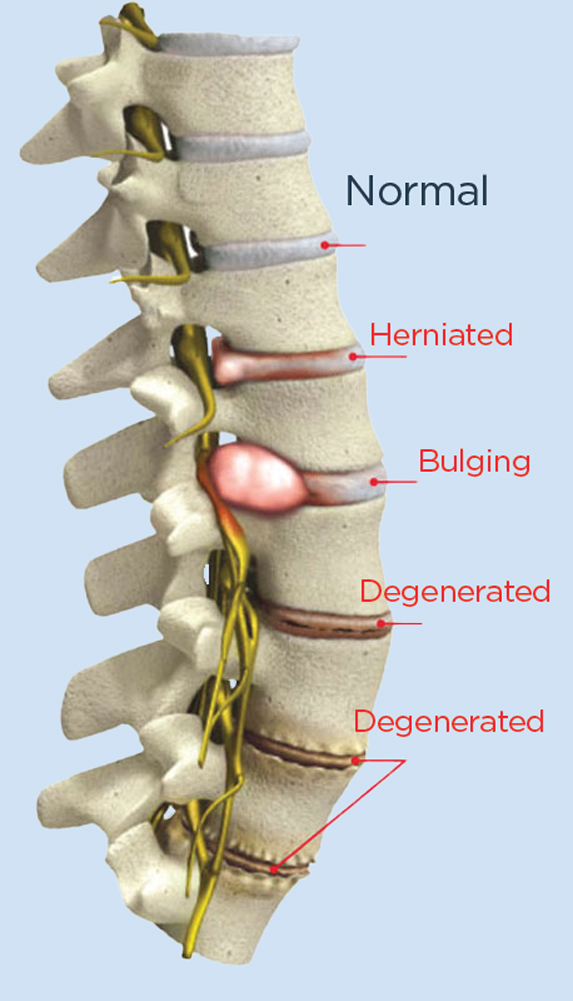

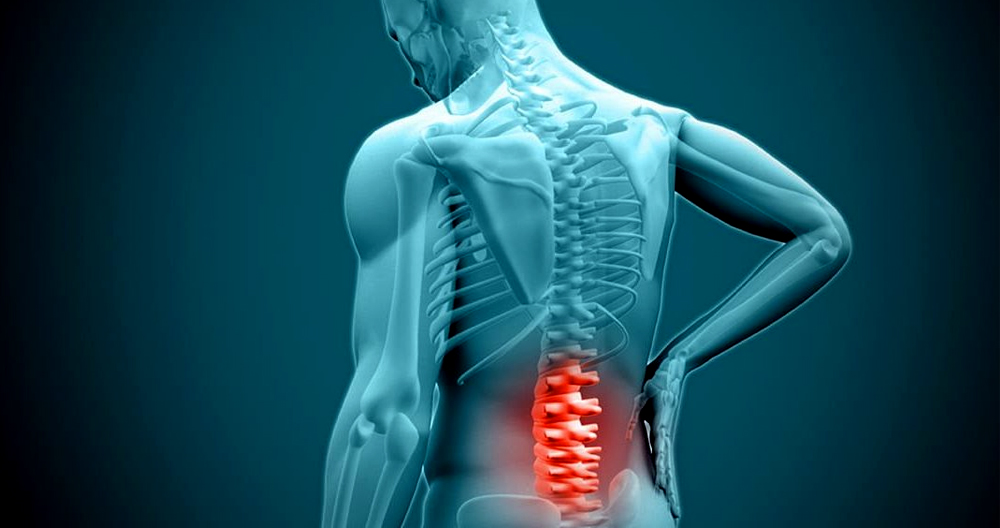
Pain is considered chronic when it lasts beyond six months. Pain occurring for less than six months is considered acute pain. Six months is the dividing line because 90% of low back pain resolves on its own before six months. The 10% of people who continue suffering beyond six months have chronic back pain and are unlikely to get better on their own. Unfortunately, no study shows that it’s permanently corrected with epidurals, physical therapy, chiropractic manipulation, or any other treatment unless the underlying cause is healed. Today, it’s known that annular tears are the underlying cause of most non-traumatic spine problems
Chronic back pain is often caused by a range of factors, including degenerative disc disease, herniated discs, spinal stenosis, muscle strain. Over time, the discs in the spine can weaken, leading to tears, bulging, or compression of nearby nerves, resulting in persistent pain. Injury, poor posture, and repetitive stress on the spine also contribute to the development of chronic pain. In some cases, pain can persist even after the original injury heals, becoming a long-term condition that affects daily life.
Treatment for chronic back pain varies depending on its cause. Conservative treatments include physical therapy, pain management medications, and lifestyle changes like exercise or posture correction. In cases where these options don’t provide relief, minimally invasive procedures such as the DISCSEEL® Procedure
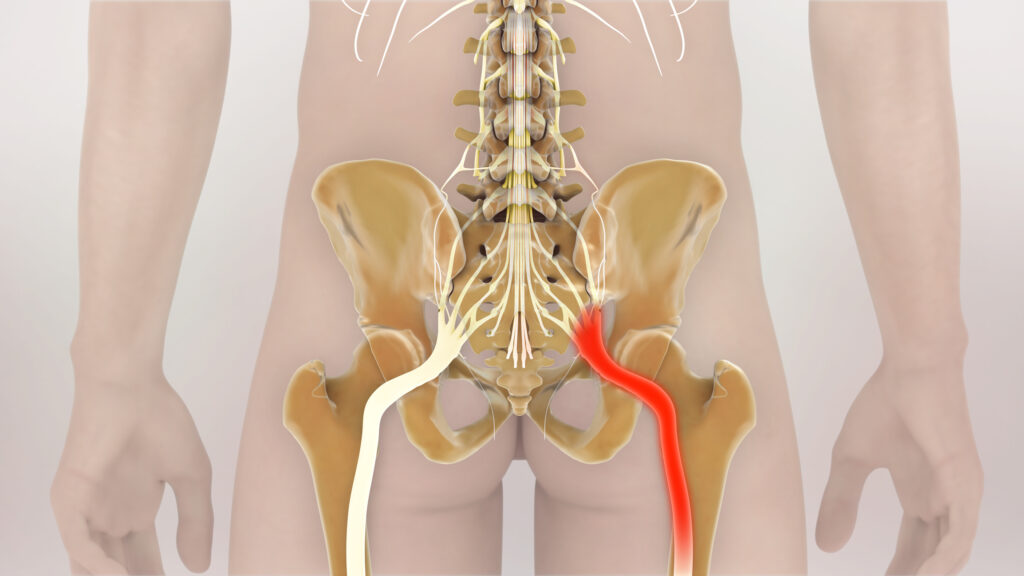
When spinal discs leak as a result of these tears,
inflammation of adjacent spinal nerves leads to sciatic nerve pain
The sciatic nerve runs down the back of the buttocks, leg, and foot. It’s the merger of the 3 bottom nerve roots (L4, L5, and S1). It’s also important to know that pinched nerves don’t cause sciatica pain. This pain is actually caused by inflammation of the nerve roots as a result of leaky discs. Inflammation occurs because the nucleus pulposus is perceived as a foreign substance by the human body when it leaks through annular tears and onto nerve roots. The leaked gel, like all foreign substances, causes inflammation that attacks nerve roots. It beats and damages nerves so much that it is referred to as “Battered Root Syndrome” by many scientific papers.
